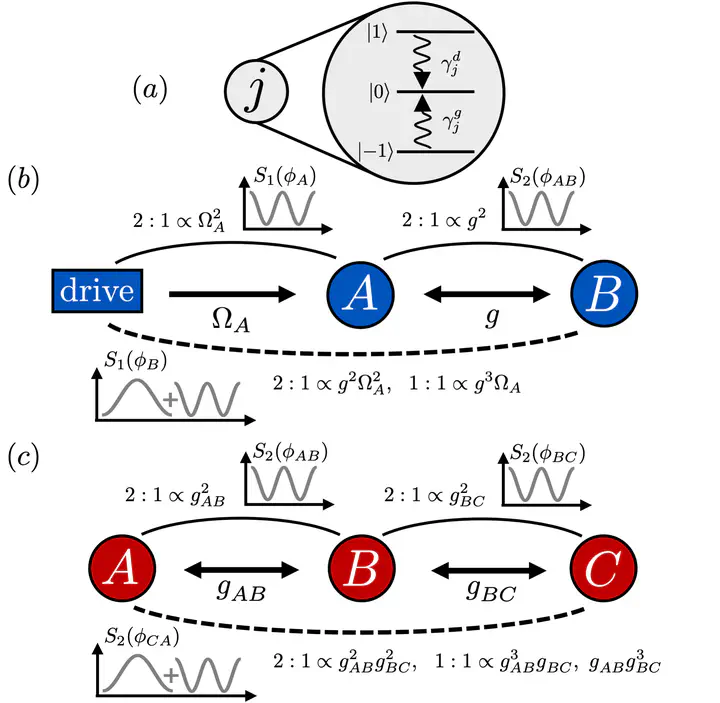 Fig. 1: Model Schemes
Fig. 1: Model Schemes
Abstract
Synchronization manifests itself in oscillators adjusting their frequencies and phases with respect to an external signal or another oscillator. In the quantum case, new features appear such as destructive interferences that can result in the suppression of phase locking. A three-level (spin-1) oscillator with equal gain and damping rates and subject to an external drive does not exhibit any 1:1 phase locking but 2:1 phase locking, i.e., its phase distribution features two maxima. This bistable locking at two opposite phases is a signature of the quantum interference synchronization blockade. An analogous behavior was found for two identical coupled spin-1 oscillators. In this work, we consider two coupled spin-1 oscillators and a drive applied to the first spin. This leads to two interference blockades between the drive and the first spin as well as between both spins. Although both interference blockades persist for strong drive and coupling strengths, remarkably, the undriven spin does show a 1:1 phase locking to the external drive. The magnitude of the locking is proportional to the drive strength if the drive strength is small. In other words, the undriven oscillator synchronizes to the external drive through both interference blockades while the blockades persist. For a chain of three coupled spin-1 oscillators, we find synchronization between the first and third spins mediated via the blockaded, second spin.